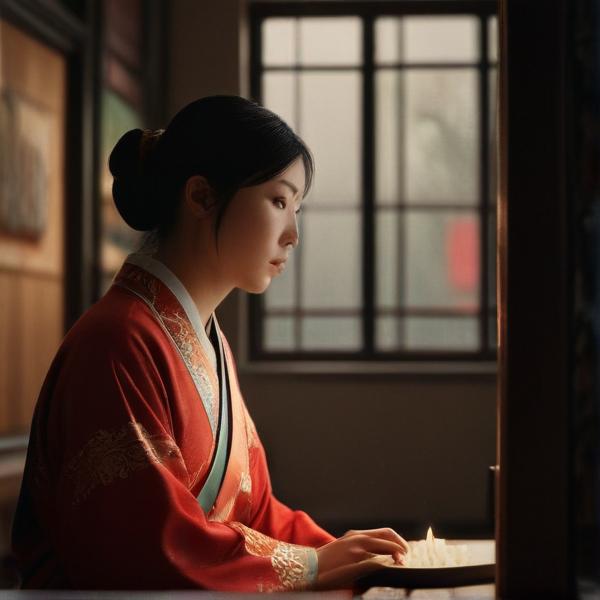基本信息 (Basic Information)
含义与用法 (Meanings & Usage)
中文核心释义 (Core Chinese Meaning): 植物刚发芽或幼小的部分,泛指出生、成长的开端,也可指少数民族“苗族”。
英文核心释义 (Core English Meaning): seedling, sprout; origin or beginning of growth; also the Miao ethnic group.
象形意义 / 为何这么写 (Pictographic Meaning / Writing Rationale)
文言文释义 (Classical Chinese Meaning)
与现代意义相近,主要指植物的新芽、幼苗,有时引申为事物的开端。Similar to modern meaning; mainly refers to sprouts or seedlings, sometimes metaphorically used for the beginning of something.
深入学习 (In-depth Study)
字源故事 (Origin Story)
字形演变 (Character Evolution)
常用词语和例句 (Common Words & Examples)
苗族 (Miao ethnic group (a recognized minority group in China))
苗族是中国的一个少数民族,拥有丰富的文化传统。
Eng: The Miao are an ethnic minority group in China with rich cultural traditions.
秧苗 (rice seedling)
春天农民在田里种下了秧苗。
Eng: In spring, farmers plant rice seedlings in the fields.
疫苗 (vaccine)
孩子们按时接种疫苗非常重要。
Eng: It's very important for children to receive vaccines on time.
相关成语 (Related Idioms)
拔苗助长
Meaning: To spoil things by excessive enthusiasm; to ruin by forcing things to go too fast (literally: pulling up seedlings to help them grow)
多语言翻译 (核心释义) (Translations (Core Meaning))
- French: pousses, jeune plant, plantule
- German: Keimling, Spross
- Spanish: brote, plantón, plántula
- Italian: germoglio, piantina
- Portuguese: broto, muda, plântula
- Russian: росток, саженец
- Arabic: شتلة، نبتة صغيرة
- Persian: جوانه، نهال
- Dutch: kiem, zaailing
- Polish: siewka, sadzonka
- Vietnamese: cây con, mầm non
- Ukrainian: паросток, саджанець
视频学习资源 (Video Learning Resources)
通过以下链接在热门视频网站搜索 "苗" 的更多讲解:
Search for more explanations of "苗" on popular video sites:
- 在 Bilibili.com 搜索 "苗 字源 说文解字" (Search on Bilibili)
- 在 YouTube.com 搜索 "苗 character origin etymology" (Search on YouTube)
网络参考 (Web References for "苗") ()
网络内容摘要 (Web Content Summary):
苗(拼音:miáo)是一级常用汉字,最早见于战国文字。 苗 (pinyin: miáo) is a level-1 frequently used Chinese character, first appearing in Warring States scripts.
“苗”的本义是指庄稼或其他植物的幼株,后来也特指蔬菜的嫩茎或嫩叶。 The original meaning of "苗" is the seedling or young plant, especially crops or vegetables' tender shoots or leaves.
除此之外,“苗”也可引申指动物初生的幼崽。 By extension, "苗" can also refer to newborn animals bred for cultivation.
- 文化背景/象形起源:“苗”始见于战国文字,象形表示植物从土地中抽芽生长,反映了“生命萌发”的意象。 Origin and imagery: First seen in scripts from the Warring States period, the character "苗" visually represents plants sprouting from the earth, symbolizing life and growth.
- 常用词语:如“苗圃”(plant nursery)、“后起之秀”(literally "seedlings that spring up later," meaning promising newcomers),以及“疫苗”(vaccine;现代医学用语,与"苗"本义无直接关系)。 Common words: such as "苗圃" (plant nursery), "后起之秀" (rising star; literally "a late-blooming seedling"), and "疫苗" (vaccine; a modern use with a different context).
- 易混淆点:“苗”与“描”(描写,to depict)字形相似,需注意辨别。 Confusion: The character "苗" can be easily confused with "描" ("to depict/paint") due to their similar appearance; be sure to distinguish them.
如果信息有限,欢迎提出更多需求以便获得详细解答。 If you need more information, please specify and more details can be provided.
苗的字源字形 - 漢典
據統計,其文約有3,005字,可辨識者,計有1,804字,比甲骨文略多。由於商周盛行青銅器,而青銅禮器以「鼎」為代表,樂器以「鐘」為代表,因其刻於金器、大鐘上故稱之金文,亦因而得"鐘鼎文"之名。 返回「苗」字
苗(汉语汉字)_百度百科
苗(读作miáo)是汉字通用规范一级字(常用字)。此字始见于战国文字。本义是庄稼以及一般植物的幼株。引申特指某些蔬菜的嫩茎或嫩叶。后又从植物扩展到动物,表示某些用于饲养的初生的动物。(基本信息栏参考资料:)
更多图片 (苗 More Images) ()
